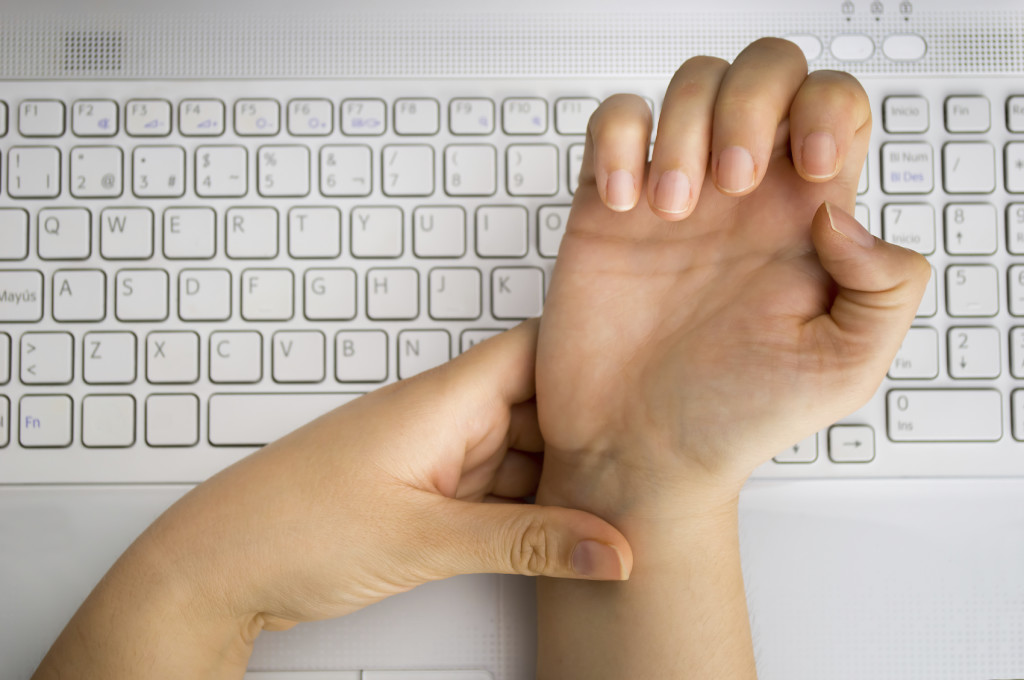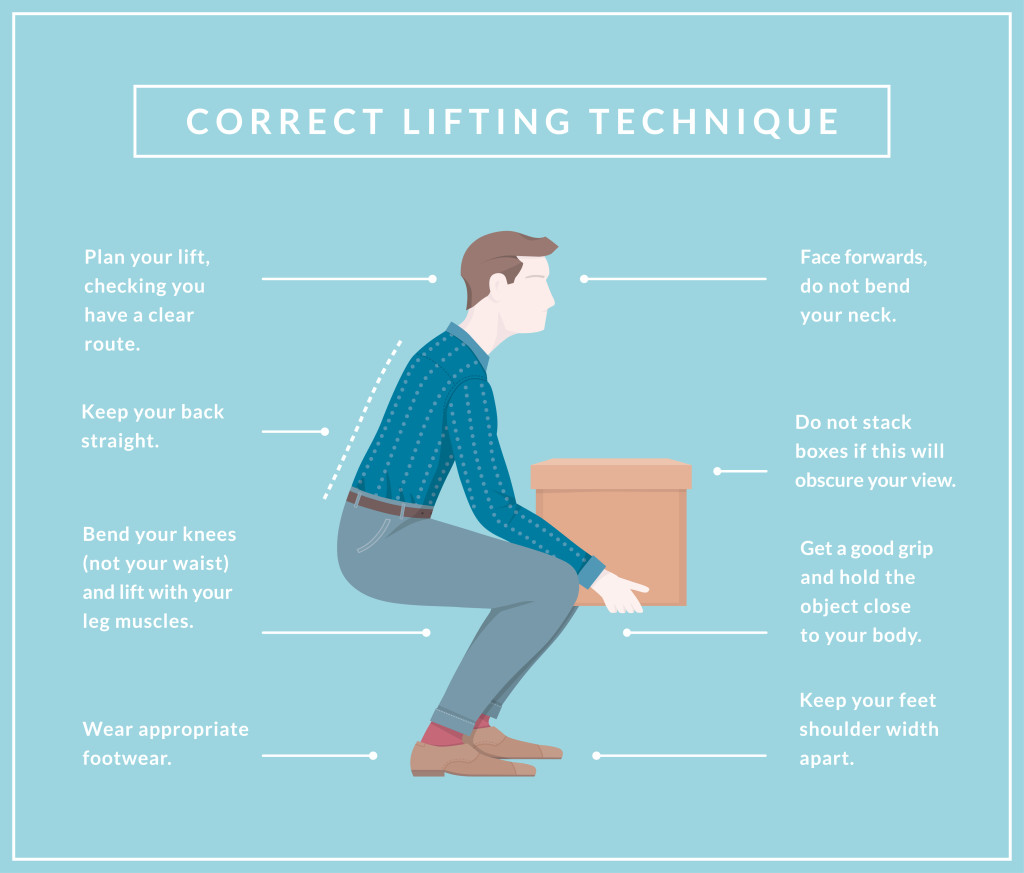Carpal Tunnel Syndrome: Cause, Symptoms & Treatment
The carpal tunnel is a passageway inside of your wrist that is meant to protect the median nerve, which runs down the arm and forearm, into your hand. It can sometimes be affected by a condition known as carpal tunnel syndrome. Carpal tunnel syndrome occurs when there is excessive pressure placed on the median nerve, causing decreased function in the hands and fingers. It can become so severe that it interferes with the ability to perform even the simplest, daily tasks.
Causes of Carpal Tunnel Syndrome
The cause varies from person to person. In some situations, engaging in certain actions may bring about the onset of carpal tunnel syndrome, such as working in a job that requires repetitive use of the hands. Some medical problems may cause the bones in your wrist to weaken, which may increase the risk of carpal tunnel syndrome. Medical problems that may weaken the bones, include:
- Aging
- Diabetes
- Ganglion cysts
- Gout
- Improperly healed injuries
- Lupus
Symptoms of Carpal Tunnel Syndrome
Carpal tunnel syndrome can develop over several years with no noticeable symptoms. However, when symptoms first appear they typically include tingling or burning sensations in the fingers, pain and numbness in the hand, weakness in the hand, and an inability to grasp onto objects. Carpal tunnel syndrome involves injury to the median nerve, so it affects the parts of the hand that the median nerve supplies, including:
- The thumb
- Index finger
- Middle finger
- Lower half of the ring finger
Carpal Tunnel Syndrome Treatment
There are a variety of non-invasive techniques that are typically used in an attempt to treat the minor symptoms of carpal tunnel syndrome, including:
- Adjusting lifestyle and working habits
- Resting the wrist by taking several small breaks throughout the day
- Applying ice packs to reduce the swelling
- Wearing a wrist splint
- Taking over-the-counter medications to relieve pain
In cases where non-invasive forms of treatment are unsuccessful, surgery may the only option. Surgery is done to remove the pressure from the median nerve by making the carpal tunnel wider.
Maintaining good overall body healthy, avoiding bad habits and using ergonomically designed equipment may help to reduce the risk of getting this syndrome. Carpal tunnel syndrome can be extremely painful, especially if the condition has progressed. If you suspect you may have early onset of carpal tunnel syndrome, it is important to visit your family physician as soon as possible to explore non-invasive treatments, which may help to prevent worsening of the condition.
If you are reading this on any other blog than Comprehensive Pain Management Center or via my RSS Feed, it is stolen content without credit. You can find us on Twitter via @CompPainMgmt. Come and visit our blog at http://www.compainmc.com/blog/.
Take Back Your Life With These Pain Management Tips
Even patients who are going to need a specialist eventually can change some of their lifestyle habits in order to better cope with their discomfort. Here is a closer look at some pain management tips that anyone can use to naturally manage their pain and take back control of their life.
Start With a Comprehensive Evaluation
Before taking any steps to treat the pain, it is vital that every patient understands exactly what is taking place in their body. In some instances, the original diagnosis will be miscalculated or completely wrong, and that is why anyone who is struggling with chronic pain will want to speak with a pain management specialist. From there, they can start coming up with a more comprehensive treatment plan.
Create a Pain Journal
A pain journal is a great option to help patients track the symptoms of their medical condition. This information will be invaluable to the doctor and give them insight into exactly what is taking place. These journals should contain thorough information on the individual’s daily activities and habits including their level of pain, the location of the pain, the patient’s meals, sleeping habits, medication that they are taking, and any other factors that could be affecting their well-being.
Managing Stress Levels
Stress plays a major role in the management and treatment of pain. Studies from around the world continue to reveal more information on the difficulties of managing pain if the patient is stressed out. All patients will need to speak with their doctor or a counselor in order to come up with methods that they can use to manage their stress. This process might include treatments ranging from mild exercise and meditation to personal therapy and support groups.
Support Groups
In addition to helping a patient manage their stress, a support group will provide a place where patients can feel safe and comfortable. A support group can also be an excellent pool of contacts to explore new treatment options or find new specialists.
These four pain management tips aim to help you deal physically and emotionally with pain. It’s not too late to take back your life.
If you are reading this on any other blog than Comprehensive Pain Management Center or via my RSS Feed, it is stolen content without credit. You can find us on Twitter via @CompPainMgmt. Come and visit our blog at http://www.compainmc.com/blog/.
Yoga Moves To Relieve Back Pain
Yoga has many benefits, but perhaps the biggest benefit is how it can help those who suffer from back pain. Back pain may be caused by many things. More often than not, though, it is a result of tight muscles or weakened muscles in the trunk and legs. Through the use of yoga moves to relieve back pain, you can help to tone and strengthen your muscles so they offer better support for your back and reduce pain.
Area of the Body To Focus On
In order to properly use yoga moves to relieve back pain, you need to understand the areas of the body that need to be worked through the poses. In the lower body, you want to work the hamstrings and the hips. Loosening these areas and increasing blood flow will strengthen them, allowing for healing of any pain that is occurring. You also want to use poses that will increase blood flow and gently stretch your back and stomach muscles.
What To Avoid
Make sure that you avoid any poses that are to complex. The poses you use should be easy and allow you to concentrate on keeping your breath steady throughout the pose. You also do not want to do any move that causes pain. Slight discomfort as you stretch is fine, but pain of any kind is not okay. Finally, make sure that you are doing the poses properly. You may want to attend a yoga class or consult with an expert to learn the poses before starting.
Examples of Poses to Use
There are many different poses that you could use as part of your yoga for back pain routine. Here is a list of poses that are all great for helping with back pain:
*Supine hamstring stretch
*Two-knee twist
*Sphinx
*Pigeon
*Thread the needle
*Legs up the wall
Using yoga for back pain is a great way for you to help relieve nagging pain on your own. It does not take a lot of time to do a few poses each day, but the results can be amazing.
Typically Employed Pain Management Procedures
Millions of people nationwide deal with chronic pain for a diverse range of reasons. If you are one of these sufferers, you have several pain management procedures to explore, ranging from relatively conservative to more serious methods such as surgery. Here are three avenues you will likely consider.
Conservative Pain Management Procedures
If you are having mild to moderate muscle aches and pains, you might try these conservative pain management procedures:
- Chiropractic Work: This form of bodywork has an emphasis on improving joint and spinal mobility and can relieve pain symptoms in many people.
- Non Weight-Bearing Exercise: Swimming and cycling are some examples of actions that can help in pain reduction.
- Physical Therapy: A practitioner can help you with exercises, extremity and spinal manipulation, and other techniques to help you reduce pain.
Medication
Drugs you can take for pain relief run the gamut from simple non-steroidal anti-inflammatory options (NSAIDs) to strong opioids such as morphine and fentanyl. Some types are available over the counter and some will need to be prescribed and even administered by a medical professional to guarantee safe use.
Minimally Invasive Options
If the above methods have not worked for you, there are other choices to discuss with your doctor. These include:
- Spinal Cord Stimulation: This technique, involving the insertion of a wire and a mechanical device, has proven to be highly effective at helping relieve nerve pain and dysfunction due to a variety of conditions.
- Lumbar Sympathetic Block: Performed to treat leg pain, this procedure is done using injection needles in one of three main ways: injection of a substance that destroys the lumbar sympathetic nerves or a local anesthetic that is long acting, or the employment of radio-frequency energy to eliminate problems with the nerves.
- Epidural Steroid Injection: Typically used for pain in the leg and back or arm/hand and neck, these drugs (usually a solution of an anti-inflammatory steroid, local anesthetic, and sometimes other substances, all long acting) are put into the spine’s epidural area.
Inforgraphic – 9 Ways to Tame Your Chronic Pain
Reasons to Talk To Your Pain Management Center about Support
Talking to anybody who suffers from chronic pain, you will likely find out that pain has as much to do with the emotional side of people as it does the physical. The mind and body are intricately connected and physical pain quickly manifests itself in the emotional and mental state of those who suffer from it. For those people, there are many strategies that medical professionals have identified to deal with it. One of these coping strategies is emotional support. Talk to your pain management center about some of the following benefits of a support group.
Sense of Community
When you have other people to turn to who know what you are going through, you will feel a stronger sense of community and kinship with people with whom you share something significant in common. People often are brought closer together when they share something difficult and help each other.
Accessibility of Information and Support
With the growth in awareness about chronic pain, more and more people are turning to online forums to discuss their chronic pain woes with others. In addition to the many support groups that might be available in your area, there are also several support groups online. These are available around the clock to help you deal with the pain when you are feeling it.
Regain Hope
You might have lost hope of ever having any help. However, with a support group, you can get some of that hope back as you talk to people who are going through the same thing you are. People will likely share resources, information, and knowledge about pain and the best ways to treat it.
If you are experiencing chronic pain, sometimes talking to people and hearing stories that are similar to your own can be very helpful. Talk to the professionals at a pain management center about support groups for fellow sufferers of chronic pain.
If you are reading this on any other blog than Comprehensive Pain Management Center or via my RSS Feed, it is stolen content without credit. You can find us on Twitter via @CompPainMgmt. Come and visit our blog at http://www.compainmc.com/blog/.
How to Naturally Alleviate Your Back Pain
Back pain can be a hard thing to live with. Medical treatments do not always take away all of your pain. Sometimes there are certain things that you have to do at home to alleviate your back pain.
Helping Your Treatment at Home
There are certain activities you can participate in that will help alleviate your back pain:
- Find ways to release endorphins. Aerobic exercise, massage therapy, meditation, eating dark chocolate and deep breathing are a few ways for you to release endorphins.
- Bathe in Epsom salts. This helps ease pain from sore muscles.
- Get restorative sleep. Back problems can lead to sleeping problems. If you get better sleep, you may reduce the back pain as well. You can get better sleep by sleeping in a different position.
- Use cold therapy, heat therapy or a combination of the two.
- Try to keep a healthy weight. This will put less stress on your back.
- Sit with good posture. Sitting can actually be one of the worst things for you to do for your back, but if you sit properly it may not be as bad.
- Stretch daily with simple yoga or other stretches. This may help lessen the pain you feel.
- Use rubs or ointments to help ease the pain.
- Add natural supplements to your daily diet. Supplements like flax seed oil, calcium, magnesium, vitamin C or zinc may help with your back pain.
- Work your core. This can help strengthen your muscles, which may help the pain.
- Exercise your brain. The way you use your brain can change the way it interprets pain.
- Slow down. Don’t work so hard or push yourself too far. Let the stress go.
These activities, along with others, may help you treat your back pain at home.
Do Not Live With the Pain
You do not have to live with the pain. If treatments from doctors are not working on their own, try adding home remedies to your regimen to alleviate your back pain.
By Dr. James Lin
If you are reading this on any other blog than Comprehensive Pain Management Center or via my RSS Feed, it is stolen content without credit.
You can find me on Twitter via @DrJamesTLin
Come and visit our blog at http://www.compainmc.com/blog/
A Back Pain Patient’s Guide to Laser Discectomy

The Cause of Your Pain
To understand how a laser discectomy heals back pain, you first need to understand what is causing your back inflammation and discomfort. A common reason is a bulging or herniated disc in your spine. Due to this malformation, your spinal cord or nerve root forgo great pressure from the herniated disc material. When the disc makes contact with the spinal cord or nerve, it causes the immediate and jaw-clenching pain you are so familiar with.
How it Works
Once it has been decided that your pain is caused from bulging discs putting pressure on your spinal cord, the laser discectomy procedure can begin. This is typically an outpatient procedure that can be completed at many hospitals. Once the procedure area has been numbed, a specialist will insert a long needle into the affected disc space. The needle contains a laser that burns and vaporizes the herniated disc material, creating immediate relief. Read more »
4 Reasons to Visit a Pain Doctor
Pain doctors specialize in helping people cope with daily pain. When you have chronic pain, it can be hard to accomplish tasks. Sometimes the pain is unbearable, and it is common for many people to suffer emotionally. If you are in pain, here are four key indicators that it is time to visit a pain doctor.
Everyday Remedies Are Failing
When you are in pain, there may be certain remedies you can try to alleviate the burden. For example, many people with back and knee pain use ice and heat to lessen their pain. If this remedy or others does not make your life easier, then it may be time to consult a pain specialist and visit a pain doctor.
You Avoid Daily Tasks
Many people suffering from chronic pain avoid daily tasks like going to the grocery store, yard work, or cleaning. Pain can make these ordinary activities extremely difficult. For example, if you have back pain, it can be hard to bend over frequently when you are cleaning. Sometimes standing is even difficult for people, especially if you have a problem like arthritis. To make life more enjoyable, it may be wise to talk with a pain doctor. He or she can determine the best ways to alleviate your discomfort. Read more »
Infographic: Correct Lifting Posture
Review the infographic below to gain knowledge on correct lifting posture in order to avoid causing back pain when lifting heavy objects.









